How Do RDSPs Work in Canada?
A Registered Disability Savings Plan (RDSP) is a special long-term savings plan designed by the Government of Canada to help people with severe disabilities (and their families) save for the future.
In essence, an RDSP is similar to other registered plans like an RRSP or RESP – you contribute after-tax money and it grows tax-free – but with one huge bonus: the Canadian government chips in with grants and bonds to boost your savings. Think of it as an “RESP for disability savings” with even more generous matching.
The uptake on RDSP is much lower than should be considering the number of eligible folks, and the substantial financial benefit available to a group that could probably use a bit of a boost.
What is a Registered Disability Savings Plan (RDSP)?
To open an RDSP, the beneficiary (the person with the disability) must be eligible for the Disability Tax Credit (DTC), but more on that later. The big appeal of RDSPs is that contributions can attract a Canada Disability Savings Grant (CDSG) of up to 300% (yes – you can literally triple your money) for those in lower income brackets.
Even those who can’t contribute to their RDSP in a given year, may receive a Canada Disability Savings Bond (CDSB) of up to $1,000 annually. It’s basically free money from Ottawa to encourage RDSP participation. Contributions and investment earnings grow tax-deferred, and when funds are withdrawn, the original contributions come out tax-free (since you already paid tax on that money) while the government grant/bond portions and investment growth are taxed as income of the beneficiary.
In practice, many RDSP beneficiaries pay little-to-no-tax on withdrawals because statistically speaking (it should be pointing out that this article is using averages and not referring to the abilities or earnings pattern of any specific individual) they are unlikely to have a high taxable income for the majority of their life.
Introduced in 2008, the RDSP is a one-of-a-kind program. Canada was the first country to implement such a plan nationally, and it remains a cornerstone of financial planning for Canadians with disabilities. As previously mentioned, it’s severely underutilized. According to Statistics Canada, as of 2020 only about 31.5% of eligible Canadians (those up to age 59 with a DTC) had opened an RDSP.
In other words, less than one-third of those who could benefit are actually using this powerful savings tool – meaning many are leaving government money on the table. The low uptake is often due to lack of awareness or confusion about how the plan works.
RDSP Eligibility: Who Can Open One?
To benefit from an RDSP, you first need to know if you’re eligible. There are a few key criteria for the beneficiary (the person the plan is meant to support):
Disability Tax Credit (DTC) Approval: The beneficiary must be approved for the federal Disability Tax Credit. This means a doctor or other medical practitioner has certified on form T2201 that the individual has a severe and prolonged physical or mental impairment, and the Canada Revenue Agency (CRA) has approved it.
No DTC = no RDSP, since the RDSP is intended specifically for those with significant disabilities. (If you’re not yet DTC-approved, getting that certificate is Step 1 before anything else.)
Age: The beneficiary must be under age 60. You can open an RDSP for someone until December 31 of the year they turn 59.
Practically, the program is most useful if started much earlier than that, because government contributions stop at a certain age. In fact, no government grants or bonds are paid after the year the beneficiary turns 49. So while you could open a plan for someone in their 50s, it’s generally less advantageous by that point (no new grants coming in after 49, and only personal contributions allowed until 59).
Residency and SIN: The beneficiary must be a Canadian resident when the plan is opened and when contributions are made, and have a valid Social Insurance Number. (The plan is meant for Canadians; if the person moves abroad later, the account can remain open but no contributions can be added while non-resident.)
One Plan at a Time: Each beneficiary can have only one RDSP at any given time. You can’t have multiple RDSPs at different institutions for the same person. However, you can transfer an RDSP from one financial institution to another if needed, rather than opening a second plan.
So, if John has DTC approval, is 40 years old, and lives in Canada, he’s eligible to have an RDSP. Now the question becomes: who actually opens and manages the RDSP? In legal terms, the person who opens and directs the account is called the plan holder. Depending on the beneficiary’s situation, the plan holder can be different people:
For a minor beneficiary (under age of majority): A parent, legal guardian, or other legal representative can open the RDSP on behalf of the child. Typically, parents are the ones to set up the plan for their minor child. A public agency or institution legally authorized to act for the child could also do it in some cases, but usually it’s the parents or guardian.
For an adult beneficiary who is considered legally competent: They can open the RDSP for themselves as the holder. It’s their plan. If a parent or guardian opened an RDSP when the beneficiary was a minor, that parent can continue as a joint holder or even remain the sole holder when the child becomes an adult only if the now-adult beneficiary consents or is added as a joint holder. (In other words, once you’re an adult and capable, you generally take control of your RDSP, but parents can stay involved with permission.)
For an adult beneficiary who cannot legally manage their finances: This is where things can get tricky. I should point out here that I understand the inherent difficulty when using terms that are describing or referring to the cognitive abilities of folks who are eligible for the disability tax credit. I’m going to do my best here to use legal terminology, and I apologize for any unintended offence that the terms may cause.
If an adult individual is not considered “contractually competent” (for example, due to a developmental disability or cognitive impairment), someone else needs to step in as plan holder.
Ideally, a legal representative or guardian would already be in place. But setting up legal guardianship can be a lengthy, expensive process, and many families have hit roadblocks opening RDSPs for adult children who can’t legally sign the papers.
To solve this, the government introduced a special provision for a temporary solution: a Qualifying Family Member (QFM) can open and manage the RDSP in such cases. Currently, until the end of 2026, a qualifying family member – defined as a spouse/common-law partner, parent, or even an adult sibling of the beneficiary – is allowed to become the plan holder if the beneficiary’s capacity to enter into a plan is in doubt and no legal representative is in place.
For example, if 30-year-old Jane has an intellectual disability and no legal guardian, her parents (or her brother/sister) can open the RDSP for her as authorized holders under this temporary measure. This QFM rule has been extended several times (and now includes siblings as of a recent update) to make RDSP access easier for families.
Important: If a legal representative (like a court-appointed guardian) is later put in place, or if the beneficiary is deemed to have capacity, the QFM’s role can end and control passes appropriately. But for now, this provision is a lifesaver for many families to get the RDSP started without going through formal guardianship proceedings.
Finally, note that maintaining eligibility is crucial. If the beneficiary loses DTC eligibility at any point, the RDSP can’t continue indefinitely. There is a grace period. Currently, you can elect to keep the RDSP open for up to 5 years hoping the person re-qualifies for the DTC (to avoid collapsing the plan). But if after that the beneficiary still isn’t DTC-eligible, the plan generally has to be closed and recent government grants/bonds must be repaid.
The remaining funds (personal contributions and older growth) can often be rolled into an RRSP/RRIF for the beneficiary or taken out (taxable) depending on circumstances.
Once you have an RDSP, try to maintain your Disability Tax Credit status. Keep an eye on when the DTC certificate expires and reapply in time, because losing it could force an unwelcome unwinding of the plan.
How to Open an RDSP Account
Opening an RDSP often requires a bit of paperwork and patience. As the blogger Big Canajun Man writes, “How to open an RDSP account sounds simple, but it is fraught with landmines and hidden silliness.” The key is preparation and choosing the right financial institution for your needs.
Both BCM and myself are fans of TD Direct Investing when it comes to the RDSP program. They were the first brokerage and first big bank in Canada RDSP plans. Opening an RDSP account with TD Direct Investing will give you access to the full range of RDSP investments we discuss below. Right now TD even has an excellent offer available to new clients.
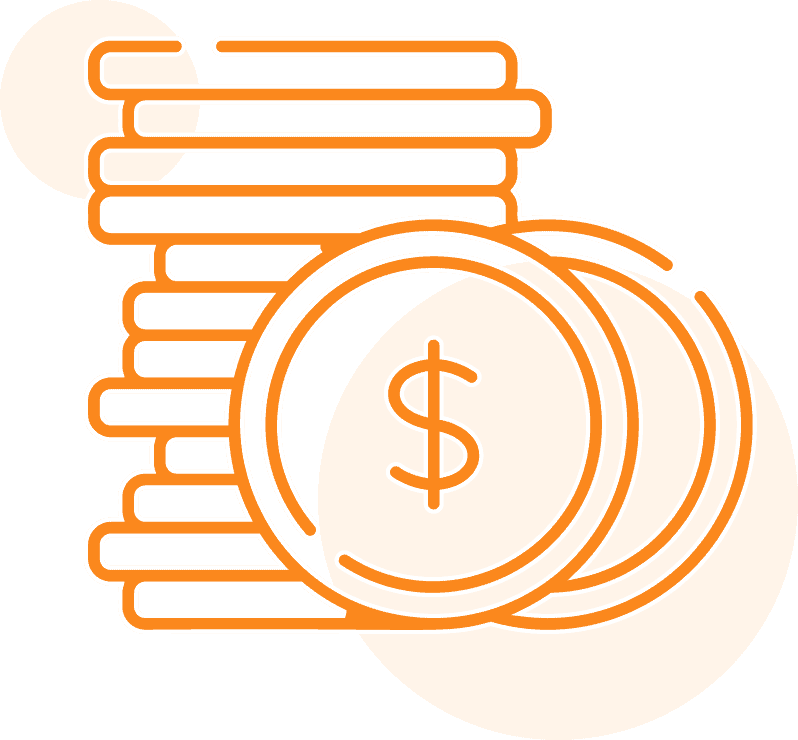
Best 2025 Canadian Big Bank Brokerage Offer:
1.00% Cash Back
New and existing accounts with TD Direct Investing & get 1% cash back on cumulative eligible transfers. Use Cashback2025 promo code.
The best big bank broker now offering a fantastic cash back reward - Get it by clicking the button below:
* Applies to both New and Existing clients ** Offer is valid until July 31, 2025. *** TD Direct Investing review - more details.
Ok, but before we put the cart ahead of the horse, let’s break down the RDSP opening process step by step:
Step 1:
Ensure the beneficiary is DTC-eligible. As discussed, you must have an approved Disability Tax Credit to qualify for an RDSP. If you haven’t applied for the DTC yet, that’s your first order of business. It involves a form (T2201) to be completed by a medical practitioner and sent to the CRA for approval. Don’t attempt open an RDSP until this is sorted.
Step 2:
Choose a participating financial institution (RDSP issuer). Not all banks or investment firms offer RDSPs. As you know from my constantly updating article on the Best Canadian Online Brokers in Canada, I’m a big fan of DIY investing. Consequently, my RDSP recommendation of going with TD Direct Investing comes from that viewpoint.
That said, RDSPs can be offered in two flavors:
Deposit-type or advisor-managed RDSPs: These are often offered by the big bank branches. They might only allow the money to be put into certain products (such as high interest savings accounts, other low risk investments, or the bank’s own mutual funds. The upside is these are straightforward (the bank’s advisor does the work), but the downside is limited investment options. For example, one bank might only let you hold GICs and a few mutual funds in the RDSP.
Self-directed RDSPs: These are offered by certain Canadian online brokers and allow you to invest in a wide array of securities – Canadian dividend stocks, GICs, ETFs, mutual funds from any provider, etc., similar to a self-directed RRSP or TFSA. This route gives you much more flexibility to seek higher returns or lower-cost investments, but you (or your financial advisor) are in charge of making those investment decisions.
Historically, finding a self-directed RDSP provider was a challenge. In fact, for many years after the RDSP launched, TD Waterhouse (now TD Direct Investing) was practically the only game in town that offered a truly flexible RDSP.
With TD Direct Investing being the original standard in regards to RDSP accounts, and their recent high rating in the Globe and Mail, they continue to be my top recommendation for RDSPs.
Step 3:
Gather documentation and open the account. Once you’ve chosen a financial institution, the actual opening process unfortunately involves paperwork. The plan holder (you) will complete an application for the RDSP, provide the beneficiary’s information (SIN, proof of age/residency if needed), and attest that the beneficiary is DTC-eligible.
If the beneficiary is an adult and not the plan holder, the beneficiary will need to consent or sign as well (unless the beneficiary lacks capacity and you’re opening it under the qualifying family member rule, in which case the institution may require proof of relationship and perhaps a doctor’s note about capacity). The forms will also include elections to allow the government grant and bond to be paid into the plan.
It’s not overly complicated, but because RDSPs are less common, don’t be surprised if some financial advisors or bank employees aren’t fully up to speed on them. You might have to (politely) educate or guide the representative if you do it through a bank branch.
For example, some readers at BCM’s website, as well as on Reddit report having to remind bank staff to apply for the bond or understanding the grant carry-forwards. Persistence helps – and if one branch seems clueless, try another or escalate to someone who specializes in registered plans.
Step 4:
Contribute and apply for grants/bonds. After the RDSP is open, you can make contributions (we’ll cover limits in the next section). The financial institution will handle requesting the Canada Disability Savings Grants and Bonds on your behalf once the account is set up.
Usually, you fill out a form upon opening that allows Employment and Social Development Canada (ESDC) to pay grants/bonds into your RDSP. Ensure this is done so you don’t miss out on any entitled money. If the beneficiary’s income (or their family income if under 18) qualifies them for the bond, simply opening the RDSP should trigger the bond deposit for that year – even with no contribution.
One more practical tip: coordinate with family members. Anyone can contribute to the RDSP with the written permission of the holder. So if grandparents or other relatives want to help out, that’s wonderful – but remember there’s a lifetime limit and specific grant entitlements per year.
It’s wise for the plan holder to manage or track all contributions so they don’t inadvertently go over the limit or miss maximizing a match (for instance, you wouldn’t want Aunt Mary contributing the wrong amount in a given year that leaves some grant money unmatched). Have a conversation and plan contributions together.
Maximizing the RDSP Canada Grant
One of the RDSP’s biggest perks is the Canada Disability Savings Grant (CDSG). The CDSG is essentially a matching contribution from the federal government that can supercharge your savings. Maximizing these grants is key to squeezing the most out of your RDSP.
How the RDSP Grant Works: Each year you contribute to the RDSP, the government will match a portion of your contribution, with the match rate depending on the beneficiary’s family income. There are two income tiers to be aware of (indexed to inflation each year). For 2024, the cutoff between tiers is $111,733 of adjusted family net income.
If the beneficiary’s family income is $111,733 or less, the grant will be 300% on the first $500 contributed, and 200% on the next $1,000 contributed each year.
In plain language, put in $500 and get a $1,500 grant; put in an additional $1,000 and get another $2,000 grant. That’s a $3,500 grant on a $1,500 contribution in a year, the maximum at this income level. A whopping effective 233% return instantly – not too shabby!
If the adjusted family income is above $111,733: The grant is 100% on the first $1,000 contributed. So at higher incomes, you’ll get dollar-for-dollar matching up to $1,000 of contributions (i.e. max $1,000 grant per year). Still a 100% immediate return, which beats any RRSP or TFSA incentive out there.
The lifetime limit for CDSG grants is $70,000 per beneficiary. Each year, the maximum grant you can get is $3,500 (except when catching up past entitlements, which we’ll address shortly). Grants can be earned on contributions made up to the end of the year the beneficiary turns 49. After age 49, no more grants – another reason to start early and contribute regularly while grants are available.
Maximizing RDSP Grants: If you’re in the lower income tier (where 300% & 200% matches apply), the optimal strategy is generally to contribute at least $1,500 per year to get the full $3,500 grant each year. That’s the sweet spot of contribution vs. matching. Any dollar beyond $1,500 in a single year won’t generate additional grant (if income is under the threshold), so you’d typically stop there and perhaps save the extra for next year.
For higher income families (above the threshold), contributing $1,000 each year yields the full $1,000 grant. Again, contributions above $1,000 in a year won’t bring in more grant money for those high-income years.
Essentially, aim to hit the max “matchable” contribution each year based on your income bracket. But life isn’t always that neat – sometimes you can’t contribute in a given year due to financial constraints, or perhaps you only discovered the RDSP later and missed many years of contributions. Thankfully, the program has a carry-forward mechanism.
Unused grant entitlements from the past 10 years can be carried forward and claimed in future years. The government will pay retroactive grants on a catch-up contribution, up to a limit of $10,500 in grants in one calendar year.
That means if you have a backlog of unused grant room (which many do, given the program started in 2008 and uptake was slow), you could potentially contribute a larger sum and receive multiple years’ worth of grants at once – with $10,500 being the cap in grants for one year’s catch-up. Similarly, unused bonds (for low-income folks) can be caught up, with a cap of $11,000 in bond payout in one year.
Example: Suppose Alice became eligible for an RDSP in 2018 but only opens one in 2025. That’s 7 years (2018–2024) of missed grant entitlements. If Alice’s income is low enough for maximum matching, she has 7 x $3,500 = $24,500 of grants “on the table.”
However, each year going forward, the most grant she can get is $10,500, which is equal to 3 years’ worth of grants. In practice, she could contribute, say, $4,500 in 2025 and the government would pay $10,500 in grants (covering 3 of those past years). In 2026, she could do it again to get another $10,500, and so on, until caught up.
The exact amount to contribute for max catch-up depends on how the government applies the oldest entitlements first, but the RDSP issuer and ESDC systems handle the calculations. Your job is just to contribute as much as you can (within the limits) to take advantage of this.
It’s important to note that the lifetime $70,000 grant limit still applies. So, if you are catching up for several years, you can bump into that limit quickly. Now, let’s not forget the Canada Disability Savings Bond (CDSB) – the other part of the equation, aimed at those with lower income. The bond is free money with no contribution required. If the beneficiary’s family net income is below about $36,500 (the exact threshold indexed; $36,502 for 2024), the government will deposit the full $1,000 bond that year into the RDSP.
If income is between ~$36.5k and $55.9k, a partial bond is paid (the amount is prorated by a formula). Above the upper threshold ($55.9k), no bond is paid. The lifetime limit for bonds is $20,000, and like grants, bonds can be received annually up to the year the beneficiary turns 49.
You don’t need to put in any money to get the bond, you just need to be eligible by income and have an RDSP open. To maximize bonds, ensure tax returns are filed (the government looks at the last two years of tax returns to establish income for grants/bonds) and open the RDSP as early as possible. Even if you have no money to contribute, by opening the plan you trigger bond eligibility and can start getting those $1,000 yearly bonds for the beneficiary.
Plus, RDSP funds do not generally affect provincial disability benefits – for example, in Ontario, RDSP balances are fully exempt as assets for ODSP, and withdrawals don’t reduce ODSP income as long as they are used in the month they come out.The government essentially set it up so that people on programs like ODSP can still benefit from an RDSP without penalty.
One final threshold to keep in mind: If the beneficiary is a child (minor) from a high-income family, then until the end of the year they turn 18, the “family income” for grant purposes is based on the parents’ income (the same income used for the Canada Child Benefit).
Starting the year the beneficiary turns 19, it switches to their own family income (which is obviously usually just their income, unless they have a spouse). This means if you have a 16 or 17-year-old beneficiary and the parents’ income is above the threshold, any contributions now would only get the 100% grant. But once the beneficiary hits 19, if they themselves have low income (which many young adults with disabilities will, especially if not working full-time), suddenly they’ll qualify for the 300%/200% match on contributions.
You might strategically delay heavy contributions until the beneficiary is 19+ to get larger matches. For example, rather than contributing $1,000 at age 17 for a $1,000 grant (because parental income is high), the family could wait and contribute (or carry forward that room) at 19 when that $1,000 contribution could fetch $3,500 in grants if the beneficiary has little income. Of course, this has to be balanced against the value of starting investing early – but it’s good to know the rule so you can optimize when to put money in for maximum grant impact based on income changes.
Maximizing the RDSP grants is arguably the most important planning aspect of the RDSP program. The federal government is effectively dangling up to $90,000 ($70k grant + $20k bond) of contributions for each person’s plan. Your mission is to capture as much of that as you can.
RDSP Contribution Limits and Rules
Like any registered plan, RDSPs have some contribution rules you need to be mindful of. Here are the key facts and limitations regarding putting money into an RDSP:
Lifetime RDSP Contribution Limit: Each beneficiary has a lifetime RDSP contribution limit of $200,000 (this includes all contributions from anyone into any RDSP for that beneficiary over their lifetime). This is not per contributor, it’s combined. And unlike an RRSP or TFSA, this limit doesn’t grow annually – it’s a fixed maximum cap.
No Annual Contribution Limit: Interestingly, there is no annual cap on how much you can contribute in a given year (aside from the lifetime max of $200k).
In theory, if you had the means, you could dump the full $200k into the RDSP in one shot or over just a couple of years. However, dumping it all at once is usually not optimal if you want to maximize grants – remember, grants are maxed on the first $1,500 (or $1,000) of contributions per year (plus catch-up). If you contributed $200k in one year, you’d blow past what can attract matching that year.
Typically it makes sense to contribute gradually to reap the matching grants each year. That said, if a large lump sum comes into the beneficiary’s life (say an inheritance or settlement) that you want in the RDSP, you might stagger contributions or still deposit it knowing grant entitlements will only pay out annually. The unused contribution room doesn’t expire, just the grant entitlements do after 10 years.
Contribution Deadline (Age): You can contribute to an RDSP until the end of the year in which the beneficiary turns 59.
After that, no further contributions are allowed (since at 60 and beyond, it’s typically withdrawal time). Remember, though, that grant eligibility ends at age 49. So contributions made from age 50 to 59 can still be done (if you haven’t hit $200k yet), but they won’t attract any matching – they’d just be additional savings growing tax-free. People do sometimes contribute in those later years if, for example, they come into money and want to shelter more in the RDSP (especially if the beneficiary has no RRSP room or other options).
Who Can Contribute to an RDSP: Anyone can contribute to the RDSP with written permission of the plan holder. This means once the plan is open, grandma, uncle, friend, you name it – they can all chip in for the beneficiary’s future, as long as the plan holder authorizes it.
In practice, usually the plan holder themselves (beneficiary or parent) organizes contributions, but if Aunt Sue wants to gift $5,000 to the RDSP, she can do so (likely by giving you the money to put in, or directly through the financial institution with the holder’s consent paperwork). All those contributions count toward the $200k lifetime cap for that beneficiary.
Contributions are NOT tax-deductible: Unlike RRSP contributions, RDSP contributions do not generate any tax deduction. They’re made with after-tax dollars, more akin to TFSA or RESP contributions. The benefit comes on the back-end through grants and tax-free growth, not upfront tax savings. So you won’t get any tax slip for RDSP contributions and you can’t write them off.
The flip side is, as mentioned earlier, that the original contributions can be withdrawn tax-free later (since you already paid tax when you earned that money).
Tax-deferred growth: Any income earned inside the RDSP (interest, dividends, and capital gains) is not taxed as it accrues. It only becomes taxable to the beneficiary when paid out as part of a withdrawal, and even then, only the proportion of the withdrawal that is growth or government money is taxable. The contributions you made come out tax-free. This works similarly to an RESP or a non-deductible RRSP in that respect.
Single Transfer RDSP rule: As noted, a beneficiary can only have one RDSP at a time, but you can transfer an RDSP from one institution to another if needed. Transfers must be done as a direct plan-to-plan transfer (you can’t have two open concurrently). Keep in mind there might be transfer fees (usually about 50 bucks), and it can take some time (several weeks or a couple of months) to move, during which no contributions can be made. S
o choose your institution wisely upfront, but know that you’re not utterly stuck forever – you can move if, say, a better option comes along or you relocate and want a local institution.
Rollover contributions: There are special provisions that allow certain rollovers into an RDSP without counting against the beneficiary’s income in the year (though they do count against the $200k contribution limit). Two notable ones are the RRSP/RRIF rollover at death of parent/grandparent, and the RESP rollover.
For example, if there was a Registered Education Savings Plan for the beneficiary, but due to the disability the child didn’t attend post-secondary or doesn’t need all the funds, there is an option to transfer up to $50,000 of an unused RESP into the RDSP for the same beneficiary.
Certain conditions apply – the beneficiary must be DTC-eligible (which they are if we’re doing RDSP), and either the RESP has been open 10+ years and beneficiary is over 21 and not going to school, or the RESP is being closed because beneficiary has a severe and prolonged disability (basically not likely to pursue post-secondary).
Managing RDSP Investments
Investing within an RDSP works much like investing in any other account. You have a menu of possible investments (depending on your financial institution), and you want to choose a strategy that balances growth, risk, and the timeframe/needs of the beneficiary.
What can you invest in? This largely depends on where you opened the RDSP. If you have a self-directed RDSP through TD Direct Investing, or any brokerage platform that supports RDSPs, you should be able to invest in pretty much any qualified investment: individual stocks, bonds, ETFs, mutual funds, REITs, GICs, etc.
RDSPs are similar to a self-directed RRSP in terms of allowable assets.
If your RDSP is with a bank in a more restricted setup, you might be limited to certain investments. For instance, some bank RDSPs are essentially a savings account or GIC only – they’ll put contributions into a deposit that earns interest. Others might allow a selection of the bank’s mutual funds, but nothing outside that. That’s why I recommend using an online brokerage instead of the more limited options.
When it comes to selecting RDSP investments, remember that RDSP funds often have a long investment horizon (particularly if you start when the beneficiary is young and plan for withdrawals not until they are, say, 60+). That suggests that investing in growth-oriented assets like stocks or ETFs could make sense to maximize long-term returns.
The grants and bonds give the account a big head start, but investing wisely can compound those gains significantly. A common approach is to treat the RDSP somewhat like a retirement portfolio: perhaps a balanced or growth-oriented asset mix.
For example, one might hold 60% in equity funds (or ETFs) and 40% in fixed income (bonds, GICs) when the beneficiary is middle-aged, adjusting to more like 30% equity/70% fixed income as they near 60. If the beneficiary is a child, you might start near 80-100% in equities (to maximize growth early on) and then rebalance over the decades. You could look at Canadian all-in-one ETFs (also called portfolio ETFs) for quick one-stop solutions.
How to Withdraw From a RDSP
After years or decades of building up an RDSP nest egg, the time will come when the beneficiary needs to use the funds. Withdrawals from an RDSP are possible at any time, but they come with conditions and strategic considerations.
The government’s goal for the RDSP is long-term financial security, so they’ve built in rules to discourage taking the money out too early (especially not right after getting all those RDSP grants). RDSP withdrawals fall into two categories:
Disability Assistance Payments (DAPs): These are one-time or occasional withdrawals that can happen at any age. An RDSP DAP is essentially any payment taken from the RDSP to the beneficiary (or to their estate if after death). You could think of a DAP as a “lump sum” withdrawal – whether it’s the whole amount or a portion. For instance, if at 40-years-old the beneficiary needs $5,000 for a new wheelchair accessible ramp, the RDSP holder might request a $5,000 DAP.
Lifetime Disability Assistance Payments (LDAPs): These are regular payments that, once started, are intended to continue at least annually for the rest of the beneficiary’s life (or until the plan is exhausted). LDAPs must begin by the end of the year in which the beneficiary turns 60. You can start them earlier if you want, any time after turning 55, but 60 is the latest. Once started, you can’t arbitrarily stop LDAPs – they’re meant to be ongoing. The plan essentially switches into “payout mode.”
An RDSP can pay both kinds of withdrawals. For example, you might take a one-time DAP at 45 for an urgent need, and later still commence LDAPs at 60 for retirement income.
10-Year Penalties for Early Withdrawals: As mentioned earlier, the government doesn’t want people to just take the money and run shortly after getting grants. So the Assistance Holdback Amount (AHA) rule requires that if any withdrawal is made, the plan must repay any Canada Disability Savings Grants and Bonds paid into the plan in the 10 years prior to the withdrawal, up to the amount withdrawn, as a penalty.
In practical terms, for every $1 you withdraw “early,” up to $3 of grants/bonds could be clawed back (because the last 10 years of grants could be as high as 3x your contributions, roughly). This is a steep penalty! If you withdraw a very large amount, you’ll end up repaying the entire last-10-years’ grants.
This rule effectively means it’s very punitive to take money out less than 10 years after receiving grants or bonds. Once you stop contributions (and thus stop grants/bonds), try to wait at least 10 years before making withdrawals. If you plan it right, you’d make your last contribution (and get your last grant) by the end of the year the beneficiary is 49, and then not touch the RDSP until age 60 – that way no clawback applies because all grants are older than 10 years.
What if you absolutely need to withdraw earlier? You can, but you have to accept the clawback hit. In some cases, it might be necessary – for example, perhaps the beneficiary needs funds in their 40s for a down payment on a condo adapted for their needs. You might decide to withdraw and sacrifice some matching.
Run the numbers – even if you lose some grants, you still keep your contributions and any investment growth. But it’s certainly best to avoid early withdrawals if possible.
Shortened Life Expectancy (SDSP) Exception: If the beneficiary is unfortunately not expected to live beyond the next five years, there is a provision to allow the RDSP to be designated a “Specified Disability Savings Plan” (SDSP). Under an SDSP, the 10-year rule is relaxed: the beneficiary can withdraw up to a certain amount each year (up to $10,000 of taxable portion per year) without having to repay all the grants. Essentially, they let you access the money with minimal penalty if you’re terminally ill.
Grants and bonds also stop once an RDSP is declared an SDSP, and no new contributions can be made. There’s a bit of a trade-off, but it’s a compassionate measure. So, if a doctor certifies a life expectancy of less than 5 years, ask your financial institution about the SDSP election.
Under those rules, for example, you could withdraw say $20,000 (half of which might be considered contributions, half gov/growth) in a year and perhaps only a small portion of recent grants might come back or none, depending on specifics. This is a complex area, but important for those rare cases.
For example, imagine at age 60 the RDSP has $200,000: $70k came from personal contributions, $70k from grants, $20k from bonds, and $40k from investment growth. Personal contributions = 35% of the plan, taxable parts (grants, bonds, growth) = 65%. So any withdrawal would be deemed 35% return of contributions (no tax) and 65% taxable RDSP income. The taxable portion is included in the beneficiary’s income for tax purposes.
Now, many RDSP beneficiaries will be in a low tax bracket, especially if they have little other income besides maybe disability benefits (which may be non-taxable or low). So often the tax hit isn’t too bad. But if the RDSP payments are large, they could affect income-tested benefits or create some tax.
Note: RDSP income does not claw back federal benefits like the DTC itself or GST credits. And provinces generally exempt RDSP withdrawals from affecting social assistance eligibility (as long as spent appropriately, as in Ontario’s rule.
It’s wise to consult an advice-only financial advisor when big withdrawals commence to plan around any taxable implications. Maybe spreading withdrawals out can keep income low and taxes minimal. Provincial benefits considerations: We touched on this but it’s important: most provinces have adjusted their social assistance programs (like ODSP in Ontario, PWD in BC, AISH in Alberta, etc.) to exclude RDSP assets and withdrawals from means-testing. For example, Ontario explicitly states RDSP funds don’t affect ODSP, and even withdrawals don’t affect ODSP as long as they are used within the month (so basically, they’re not counted as income).
Example RDSP Withdrawal Scenario: Let’s say the beneficiary, Mark, turns 60 and has an RDSP worth $250,000. Suppose more than half of that is from grants and growth. The plan would then start LDAPs. Using the formula, maybe the calculation says Mark can receive up to $15,000 per year as an LDAP.
So Mark might get $1,250 monthly from his RDSP for life. That $15k will be taxable (the contribution portion of each payment might make part of it tax-free, but let’s assume mostly taxable). If Mark’s only other income is a small CPP disability or OAS later on, $15k might be mostly below the basic tax threshold – meaning he keeps almost all of it. And because all the grants were older than 10 years, no clawback applies.
Mark can enjoy these payments knowing they originated from contributions, decades of investment, and a whole lot of government matching that he successfully earned and kept. If Mark wanted a larger lump at 60, he could take a DAP in addition to LDAP (some plans allow that), but any extra beyond the formula might cause some issues if too high relative to holdback. Typically, once you’re into the payout phase past 60, the 10-year clawback no longer is a concern because no new grants were added after 49. So after 60, you really are free to withdraw as you wish (subject to the LDAP annual max if PGAP).
If the RDSP had very little government money (say it was mostly family contributions), then at 60 you could even collapse it or take big chunks – you’d only repay any last 10-year grants (which might be none or small) and you’re done. One more nuance – plan closure: An RDSP must be closed by the end of the year following the year the beneficiary dies. At death, any grants/bonds in the last 10 years are paid back, and remaining funds go to the beneficiary’s estate.
Maximizing your RDSP Benefits
The Registered Disability Savings Plan is a powerful tool. It has its complexities, but as we’ve seen, the payoff can be enormous in securing financial stability for a person with a disability. To sum up, if you want to max out your RDSP potential:
1) Start Early and Contribute Regularly: The earlier you open the RDSP, the more years of grants and bonds you can collect, and the longer your investments can grow tax-free. If your child is born with or acquires a disability, get that DTC and RDSP going as soon as practical. Each year from now to age 49 is a chance at up to $3,500 in grants or $1,000 in bonds – make as many of those years count as you can. If you’re starting late, don’t despair – use the 10-year carryforward to catch up on missed grants, and get as many as possible while you still can.
2) Max out the “Free Money”: This bears repeating – always aim to contribute enough to get the full available matching grant for the year. That could mean budgeting $125 a month (about $1,500 a year) if you qualify for maximum matches, or about $85 a month ($1,000 a year) if you’re in the high-income bracket.
Plus, getting a $1,000 yearly bond for doing nothing but having the account is a no-brainer.
3) Keep Eligibility Intact: Stay on top of the Disability Tax Credit status. Mark your calendar for when your DTC certificate expires (if it’s not indefinite) and start the renewal process early. The RDSP’s benefits hinge on DTC, and losing it can halt new grants and potentially force a wind-up after a grace period. Similarly, ensure tax returns (for the beneficiary or parents) are filed every year, as that’s how the government determines your grant/bond eligibility. No filed return, no income info, which could lead to missing out on bonds or defaulting to lower grant rates.
4) Choose the Right Financial Institution: The difference between a good and bad RDSP provider can mean thousands of dollars. Look for an institution or platform that offers flexibility in investments and low fees. I recommend TD Direct Investing (a pioneer in self-directed RDSPs) as they are an easy-to-use platform that lets you minimize investing fees as they pertain to your RDSP investments.
5) Invest Wisely for the Long Term: Once the money is in the RDSP, put it to work according to a plan. Generally, a diversified portfolio with an appropriate mix of growth (equities) and safety (bonds/GICs) will serve well. Given the long-term nature, don’t be afraid of growth assets especially in the early years – the grant money provides a cushion that can make taking some risk worthwhile. Over time, adjust the asset mix as the beneficiary approaches the withdrawal age or as their needs change.
6) Plan Withdrawals Strategically: The golden rule is to wait at least 10 years after the last grant to begin withdrawals. By doing so, you keep every grant dollar you received. If circumstances force an earlier withdrawal, try to minimize it or understand the clawback cost.
The RDSP is there to give Canadians with disabilities not just a safety net, but a springboard to greater financial security. By putting in a little time on the front end to thoroughly understand RDSP contributions, grant rules, and RDSP withdrawal strategies, you can greatly increase a loved one’s financial security for decades to come.
I've Completed My Million Dollar Journey. Let Me Guide You Through Yours!
Sign up below to get a copy of our free eBook: Can I Retire Yet?



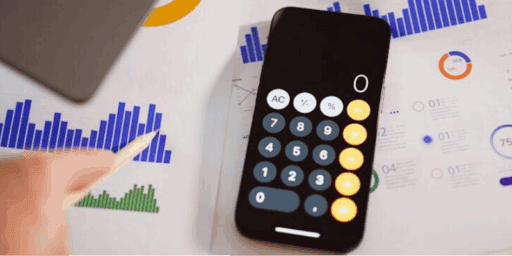
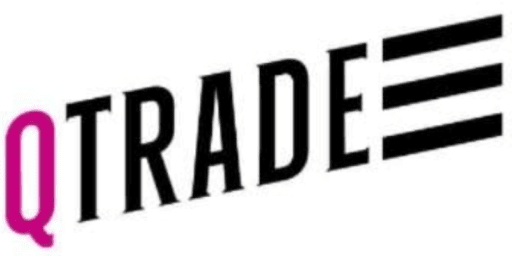


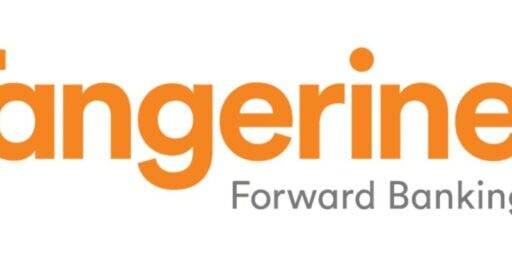

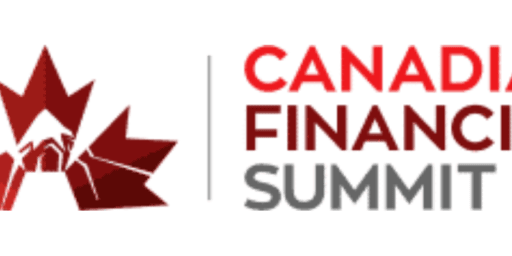

As of 2021, the RDSP does not have to close when a beneficiary loses the DTC: https://www.canada.ca/en/revenue-agency/services/forms-publications/publications/rc4460/registered-disability-savings-plan.html#P44_1121
For BC residents, this organization offers from time to time (depending on funding) a free one-time $150 grant to RDSP holders to kickstart their savings. This counts as a contribution and so it gets matched by the federal government too.
Are you sure about this?
According to Big Canajun Man, this changed in the 2019 budget and RDSP plans can now stay open indefinitely.